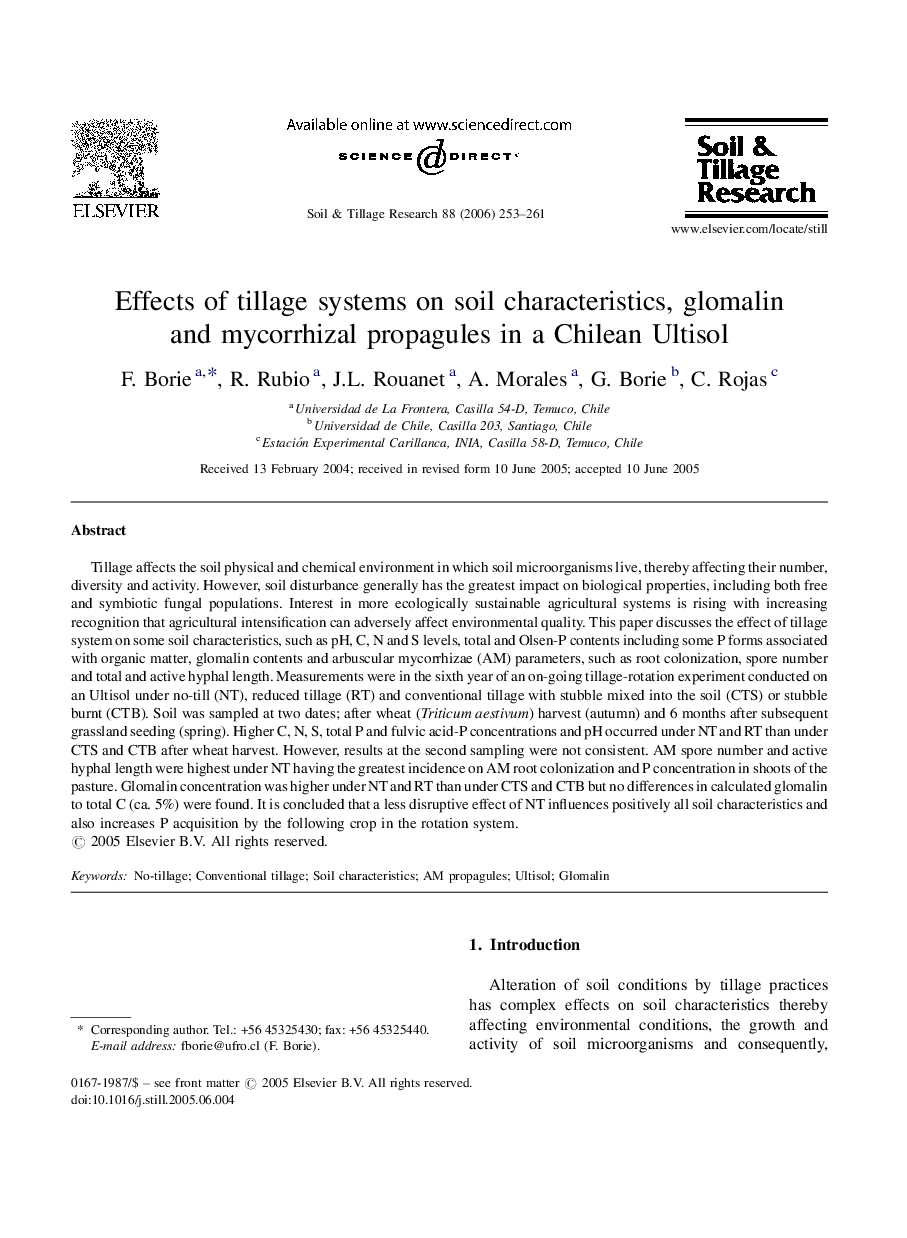| Article ID | Journal | Published Year | Pages | File Type |
|---|---|---|---|---|
| 306967 | Soil and Tillage Research | 2006 | 9 Pages |
Tillage affects the soil physical and chemical environment in which soil microorganisms live, thereby affecting their number, diversity and activity. However, soil disturbance generally has the greatest impact on biological properties, including both free and symbiotic fungal populations. Interest in more ecologically sustainable agricultural systems is rising with increasing recognition that agricultural intensification can adversely affect environmental quality. This paper discusses the effect of tillage system on some soil characteristics, such as pH, C, N and S levels, total and Olsen-P contents including some P forms associated with organic matter, glomalin contents and arbuscular mycorrhizae (AM) parameters, such as root colonization, spore number and total and active hyphal length. Measurements were in the sixth year of an on-going tillage-rotation experiment conducted on an Ultisol under no-till (NT), reduced tillage (RT) and conventional tillage with stubble mixed into the soil (CTS) or stubble burnt (CTB). Soil was sampled at two dates; after wheat (Triticum aestivum) harvest (autumn) and 6 months after subsequent grassland seeding (spring). Higher C, N, S, total P and fulvic acid-P concentrations and pH occurred under NT and RT than under CTS and CTB after wheat harvest. However, results at the second sampling were not consistent. AM spore number and active hyphal length were highest under NT having the greatest incidence on AM root colonization and P concentration in shoots of the pasture. Glomalin concentration was higher under NT and RT than under CTS and CTB but no differences in calculated glomalin to total C (ca. 5%) were found. It is concluded that a less disruptive effect of NT influences positively all soil characteristics and also increases P acquisition by the following crop in the rotation system.
